Search Result
Results for "
receptor activating properties.
" in MedChemExpress (MCE) Product Catalog:
6
Isotope-Labeled Compounds
| Cat. No. |
Product Name |
Target |
Research Areas |
Chemical Structure |
-
- HY-111323
-
|
|
ROR
|
Neurological Disease
|
|
ASN06917370 is a former orphan receptor GPR17 ligand for the study of neurodegenerative diseases. ASN06917370 has an EC50 of 268 pM in [35S]GTPyS experiments .
|
-
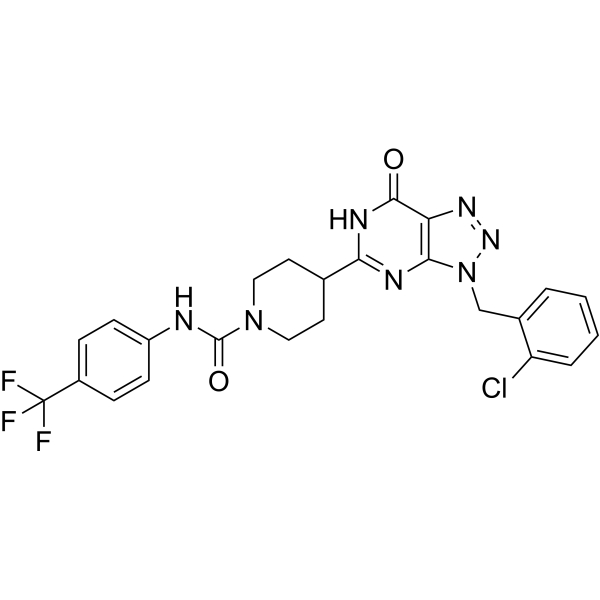
-
- HY-B0649
-
-
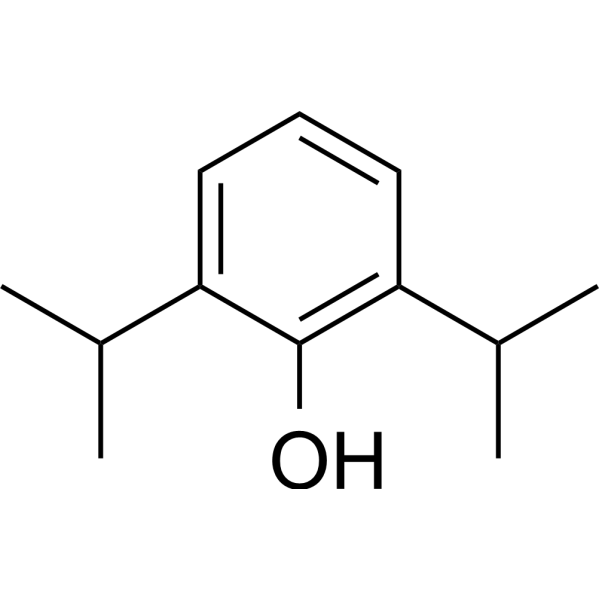
-
- HY-152472
-
|
|
Trk Receptor
|
Neurological Disease
|
|
ENT-C225 is an effective activator of TrkB neurotrophin receptor. ENT-C225 has high effect on activating TrkB receptor (TrkBR), and has good physicochemical properties and neuroprotective properties .
|
-
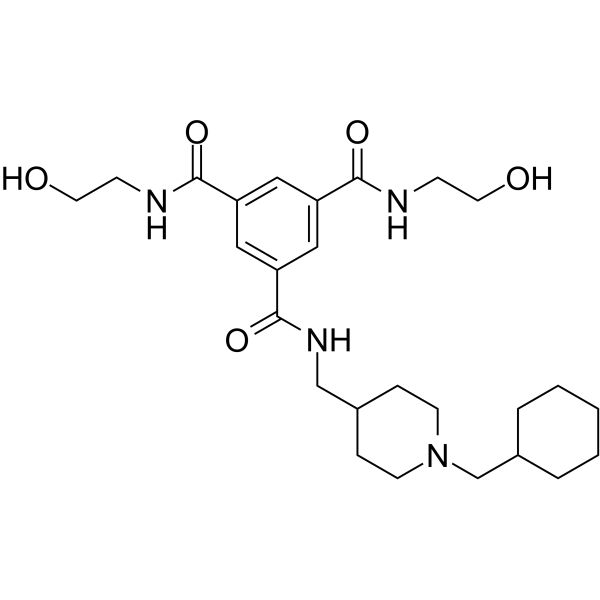
-
- HY-B0649S
-
|
|
GABA Receptor
Endogenous Metabolite
|
Neurological Disease
|
|
Propofol-d17 is the deuterium labeled Propofol. Propofol potently and directly activates GABAA receptor and inhibits glutamate receptor mediated excitatory synaptic transmission. Propofol has antinociceptive properties[1].
|
-
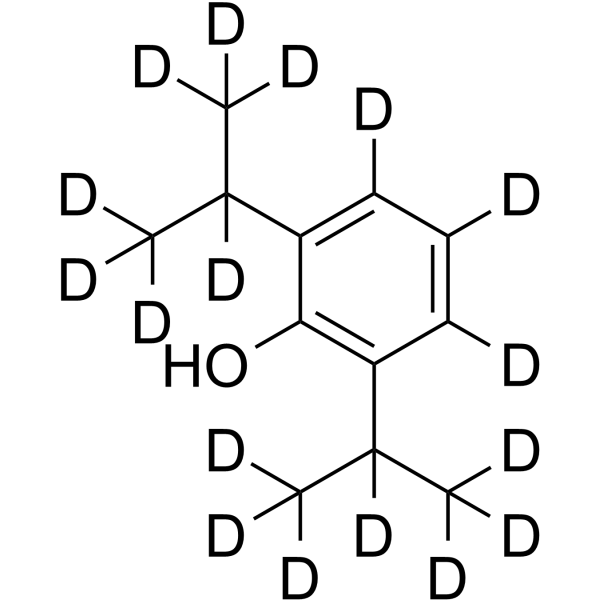
-
- HY-143314
-
|
|
Protease Activated Receptor (PAR)
|
Cardiovascular Disease
|
|
Protease-Activated Receptor-1 antagonist 2 is an orally active protease-activated receptor-1 (PAR-1) antagonist, with an IC50 value of 7 nM. Protease-Activated Receptor-1 antagonist 2 has favorable pharmacokinetic properties which is useful in the research of cardiovascular disease (CVD), such as atherosclerosis and restenosis .
|
-
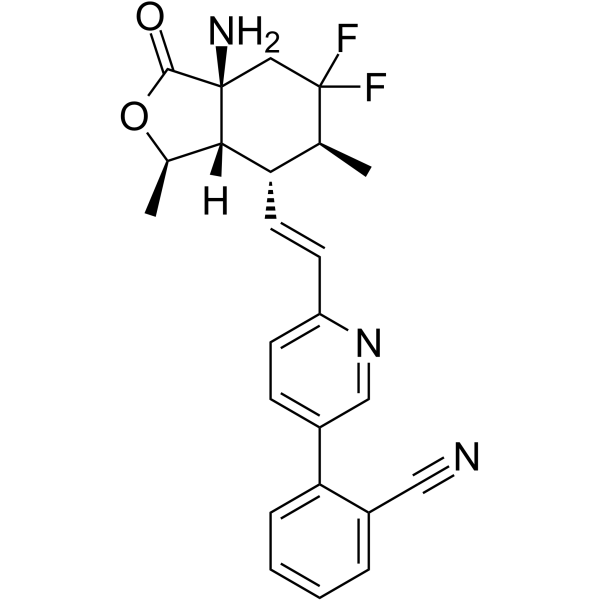
-
- HY-N0050
-
|
(+)-Allomatrine
|
Others
|
Neurological Disease
|
|
Allomatrine ((+)-Allomatrine) is an alkaloid from the bark of Sophora japonica. Allomatrine has antinociceptive properties mediated mainly through the activation ofκ-opioid receptors .
|
-
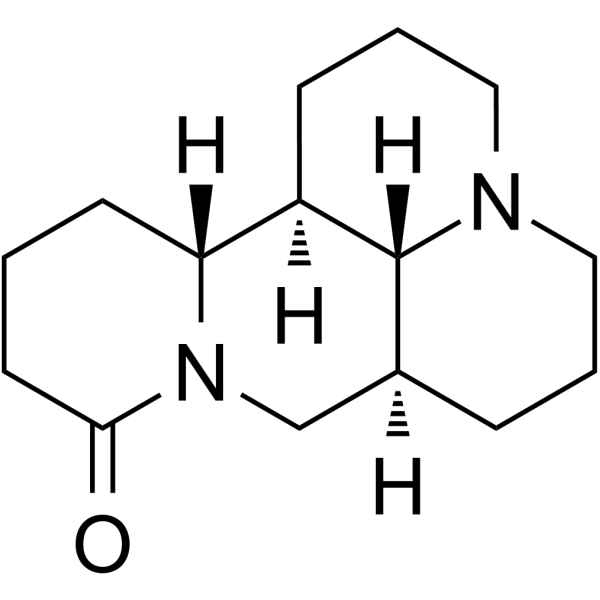
-
- HY-143316
-
|
|
Others
|
Neurological Disease
|
|
NPR-C activator 1 (Compound 1) is a potent activator of natriuretic peptide receptor C (NPR-C). C-type natriuretic peptide (CNP) is involved in the regulation of vascular homeostasis. NPR-C activator 1 is identified as a potent agonist (EC50 ∼ 1 μM) with promising in vivo pharmacokinetic properties .
|
-

-
- HY-B0649R
-
|
2,6-Diisopropylphenol (Standard)
|
GABA Receptor
Endogenous Metabolite
|
Neurological Disease
Cancer
|
|
Propofol (Standard) is the analytical standard of Propofol. This product is intended for research and analytical applications. Propofol potently and directly activates GABAA receptor and inhibits glutamate receptor mediated excitatory synaptic transmission. Propofol has antinociceptive properties and is used for sedation and hypnotic .
|
-
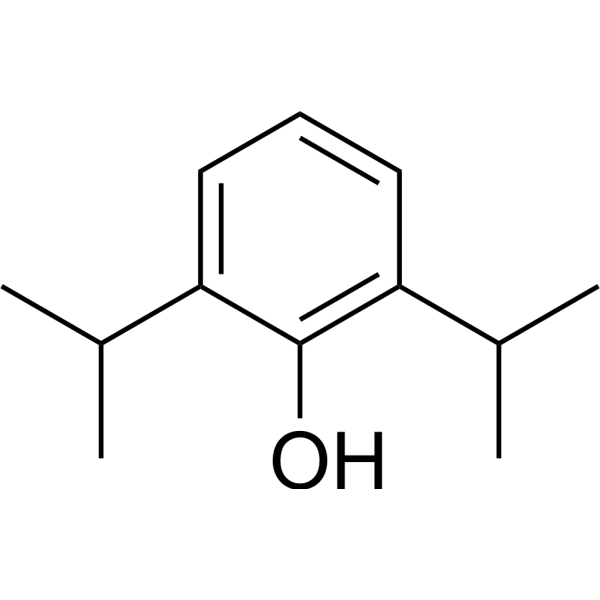
-
- HY-B0075S
-
-

-
- HY-130345
-
|
|
Platelet-activating Factor Receptor (PAFR)
|
Cardiovascular Disease
|
|
C18-PAF, octadecane PAF, is the ligand of platelet-activating factor and PAF G protein-coupled receptor (PAFR). C18-PAF has renovasodilator properties and antihypertensive lipid properties. C18-PAF increases renal blood flow and causes dose-dependent systemic hypotension .
|
-
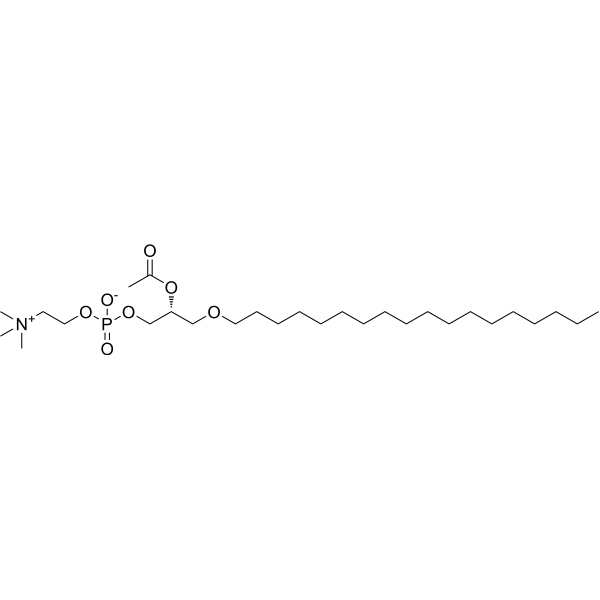
-
- HY-N0499
-
|
IdB 1027
|
RANKL/RANK
|
Cancer
|
|
Cyanidin Chloride (IdB 1027), a subclass of anthocyanin, displays antioxidant and anti-carcinogenesis properties. Cyanidin Chloride (IdB 1027) inhibits osteoclast formation, hydroxyapatite resorption, and receptor activator of NF-κB ligand (RANKL)-induced osteoclast marker gene expression .
|
-
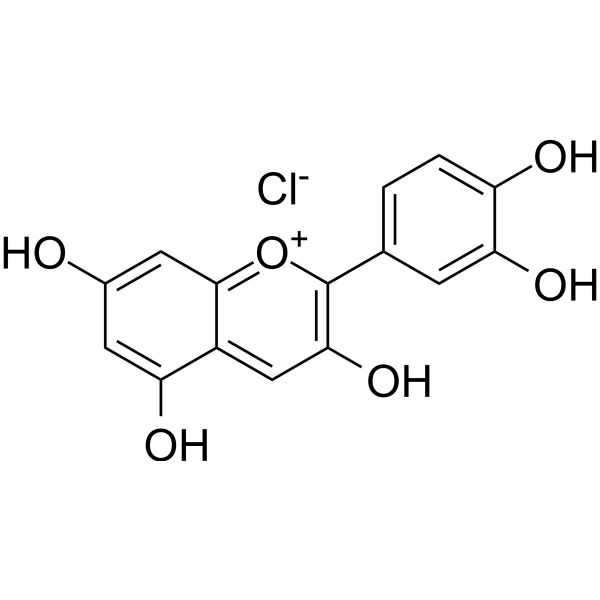
-
- HY-141581
-
-

-
- HY-103474
-
|
(+)-Bicuculline methiodide; d-Bicuculline methiodide
|
GABA Receptor
|
Neurological Disease
|
|
Bicuculline methiodide is a potent GABA(A) receptors blocker. Bicuculline methiodide alters membrane properties and firing pattern. Bicuculline methiodide reduces the Apamin-sensitive afterhyperpolarization, while Apamin is a toxin isolated from bee venom to block small conductance Ca 2+ -activated K + channels. Bicuculline methiodide facilitates burst firing via blocking apamin-sensitive Ca 2+ -activated K + current .
|
-
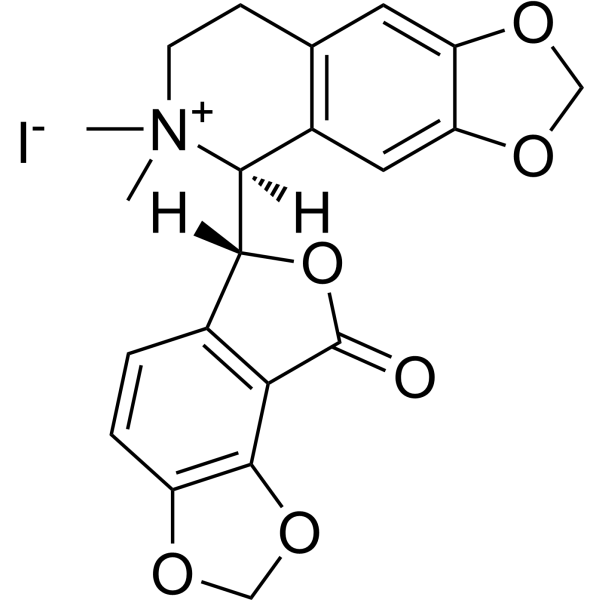
-
- HY-10936
-
|
|
iGluR
|
Neurological Disease
|
|
S 18986 is a selective, orally active, brain penetrant positive allosteric modulator of AMPA-type receptors. S 18986 shows cognitive enhancing properties in rodents. S 18986 activates the release of noradrenaline and acetylcholine in rat hippocampus and enhances rat memory in object-recognition tests .
|
-

-
- HY-120026
-
|
KB015
|
Thyroid Hormone Receptor
|
Neurological Disease
|
|
KB130015 (KB015) is an orally active and potent ThRα and ThRβ (Thyroid Hormone Receptor) inhibitor, with IC50 values of 4.5 and 5.1 μM, respectively. KB130015 has antiarrhythmic properties. KB130015 markedly slows the kinetics of inactivation of Na + channels. KB130015 opens large-conductance Ca 2+-activated K + channels and relaxes vascular smooth muscle .
|
-
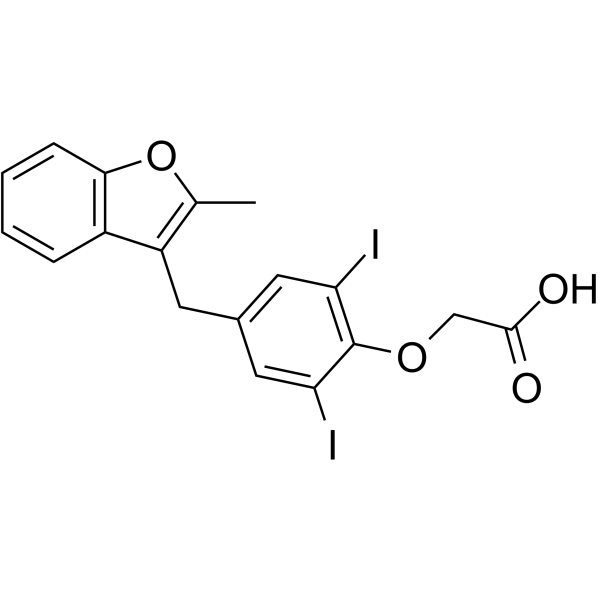
-
- HY-12700
-
|
|
Trace Amine-associated Receptor (TAAR)
|
Neurological Disease
|
|
RO5256390 is an agonist of trace amine-associated receptor 1 (TAAR1), a highly conserved G-protein-coupled receptor (GPCR) bound by endogenous trace amines. RO5256390 can be used to reduce multiple behavioral effects of agents of abuse through their actions on the mesocorticolimbic system . RO5256390 is a modulator of monoaminergic neurotransmission, blocks psychostimulant-induced hyperactivity and produces a brain activation pattern reminiscent of the antipsychotic agent olanzapine, suggesting antipsychotic-like properties .
|
-
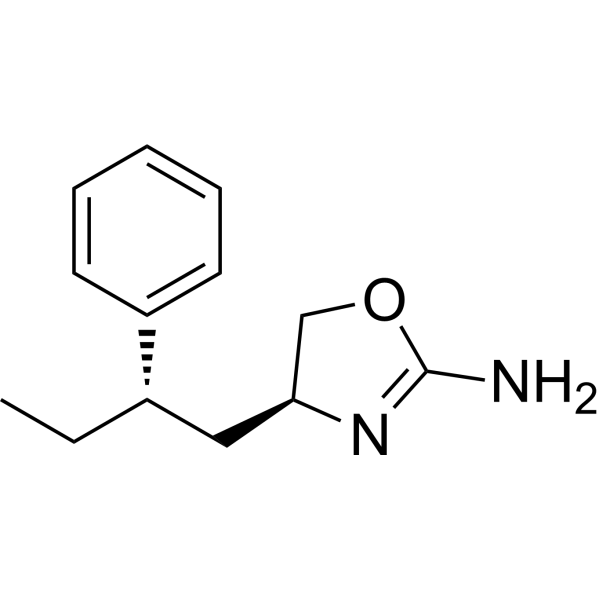
-
- HY-B0075S2
-
|
N-Acetyl-5-methoxytryptamine-d7
|
Melatonin Receptor
Autophagy
Mitophagy
Endogenous Metabolite
Apoptosis
|
Neurological Disease
Inflammation/Immunology
Cancer
|
|
Melatonin-d7 is the deuterium labeled Melatonin. Melatonin is a hormone made by the pineal gland that can activates melatonin receptor. Melatonin plays a role in sleep and possesses important antioxidative and anti-inflammatory properties[1][2][3]. Melatonin is a novel selective ATF-6 inhibitor and induces human hepatoma cell apoptosis through COX-2 downregulation[4]. Melatonin attenuates palmitic acid-induced (HY-N0830) mouse granulosa cells apoptosis via endoplasmic reticulum stress[5].
|
-

-
- HY-B0075S1
-
|
N-Acetyl-5-methoxytryptamine-d3
|
Melatonin Receptor
Autophagy
Mitophagy
Endogenous Metabolite
Apoptosis
|
Neurological Disease
Inflammation/Immunology
Cancer
|
|
Melatonin-d3 is the deuterium labeled Melatonin. Melatonin is a hormone made by the pineal gland that can activates melatonin receptor. Melatonin plays a role in sleep and possesses important antioxidative and anti-inflammatory properties[1][2][3]. Melatonin is a novel selective ATF-6 inhibitor and induces human hepatoma cell apoptosis through COX-2 downregulation[4]. Melatonin attenuates palmitic acid-induced (HY-N0830) mouse granulosa cells apoptosis via endoplasmic reticulum stress[5].
|
-

-
- HY-P1345
-
|
|
Complement System
|
Neurological Disease
Endocrinology
|
|
TLQP-21, a VGF-derived peptide endowed of endocrine and extraendocrine properties, is a potent G-protein-coupled receptor complement-3a receptor 1 (C3aR1) agonist (EC50: mouse TLQP-21=10.3 μM; human TLQP-21=68.8 μM). TLQP-21 activates C3aR1 to induce an increase of intracellular Ca 2+. TLQP-21 is used for the research in regulation of nociception and other relevant physiologic functions .
|
-

-
- HY-16561S1
-
|
trans-Resveratrol-13C6; SRT501-13C6
|
Isotope-Labeled Compounds
IKK
Autophagy
Mitophagy
Sirtuin
Apoptosis
Bacterial
Fungal
Antibiotic
Keap1-Nrf2
|
Infection
Inflammation/Immunology
Cancer
|
|
Resveratrol- 13C6 is the 13C-labeled Resveratrol. Resveratrol (trans-Resveratrol; SRT501), a natural polyphenolic phytoalexin that possesses anti-oxidant, anti-inflammatory, cardioprotective, and anti-cancer properties. Resveratrol (SRT 501) has a wide spectrum of targets including mTOR, JAK, β-amyloid, Adenylyl cyclase, IKKβ, DNA polymerase. Resveratrol also is a specific SIRT1 activator[1][2][3][4]. Resveratrol is a potent pregnane X receptor (PXR) inhibitor[5]. Resveratrol is an Nrf2 activator, ameliorates aging-related progressive renal injury in mice model[6]. Resveratrol increases production of NO in endothelial cells[7].
|
-

-
- HY-16561S
-
|
trans-Resveratrol-d4; SRT501-d4
|
Isotope-Labeled Compounds
IKK
Autophagy
Mitophagy
Sirtuin
Apoptosis
Bacterial
Fungal
Antibiotic
Keap1-Nrf2
|
Infection
Inflammation/Immunology
Cancer
|
|
Resveratrol-d4 is the deuterium labeled Resveratrol. Resveratrol (trans-Resveratrol; SRT501), a natural polyphenolic phytoalexin that possesses anti-oxidant, anti-inflammatory, cardioprotective, and anti-cancer properties. Resveratrol (SRT 501) has a wide spectrum of targets including mTOR, JAK, β-amyloid, Adenylyl cyclase, IKKβ, DNA polymerase. Resveratrol also is a specific SIRT1 activator[1][2][3][4]. Resveratrol is a potent pregnane X receptor (PXR) inhibitor[5]. Resveratrol is an Nrf2 activator, ameliorates aging-related progressive renal injury in mice model[6]. Resveratrol increases production of NO in endothelial cells[7].
|
-

-
- HY-115644
-
|
|
Melanocortin Receptor
|
Inflammation/Immunology
|
|
BMS-470539 dihydrochloride is a highly potent and selective melanocortin-1 receptor (MC-1R) agonist with an IC50 of 120 nM, an EC50 of 28 nM. BMS-470539 dihydrochloride does not activate MC-3R and is a very weak partial agonist at MC-4R and MC-5R. BMS-470539 dihydrochloride has potently anti-inflammatory properties .
|
-
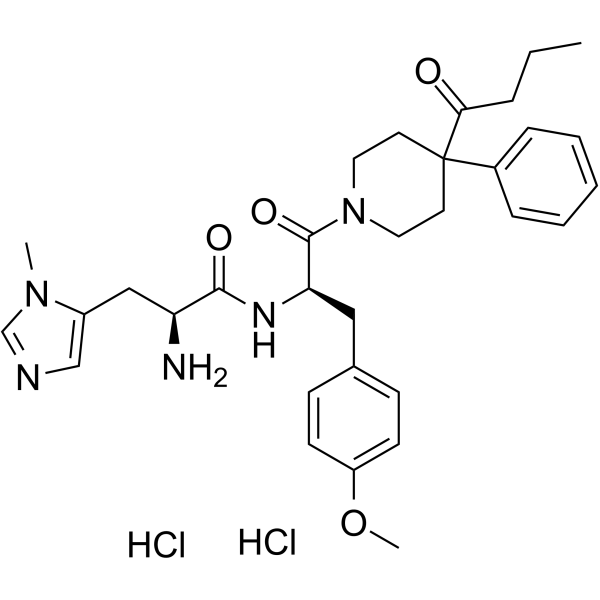
-
- HY-16561
-
Resveratrol
Maximum Cited Publications
80 Publications Verification
trans-Resveratrol; SRT501
|
IKK
Autophagy
Mitophagy
Sirtuin
Apoptosis
Bacterial
Fungal
Antibiotic
Keap1-Nrf2
|
Infection
Inflammation/Immunology
Cancer
|
|
Resveratrol (trans-Resveratrol; SRT501), a natural polyphenolic phytoalexin that possesses anti-oxidant, anti-inflammatory, cardioprotective, and anti-cancer properties. Resveratrol (SRT 501) has a wide spectrum of targets including mTOR, JAK, β-amyloid, Adenylyl cyclase, IKKβ, DNA polymerase. Resveratrol also is a specific SIRT1 activator . Resveratrol is a potent pregnane X receptor (PXR) inhibitor . Resveratrol is an Nrf2 activator, ameliorates aging-related progressive renal injury in mice model . Resveratrol increases production of NO in endothelial cells .
|
-

-
- HY-P1345A
-
|
|
Complement System
|
Neurological Disease
Endocrinology
|
|
TLQP-21 TFA, a VGF-derived peptide endowed of endocrine and extraendocrine properties, is a potent G-protein-coupled receptor complement-3a receptor1 (C3aR1) agonist (EC50: mouse TLQP-21=10.3 μM; human TLQP-21=68.8μM). TLQP-21 TFA activates C3aR1 to induce an increase of intracellular Ca 2+. TLQP-21 TFA is used for the research in regulation of nociception and other relevant physiologic functions .
|
-

-
- HY-B0075
-
|
N-Acetyl-5-methoxytryptamine
|
Melatonin Receptor
Autophagy
Mitophagy
Endogenous Metabolite
Apoptosis
|
Neurological Disease
Inflammation/Immunology
Cancer
|
|
Melatonin is a hormone made by the pineal gland that can activates melatonin receptor. Melatonin plays a role in sleep and possesses important antioxidative and anti-inflammatory properties . Melatonin is a novel selective ATF-6 inhibitor and induces human hepatoma cell apoptosis through COX-2 downregulation . Melatonin attenuates palmitic acid-induced (HY-N0830) mouse granulosa cells apoptosis via endoplasmic reticulum stress .
|
-
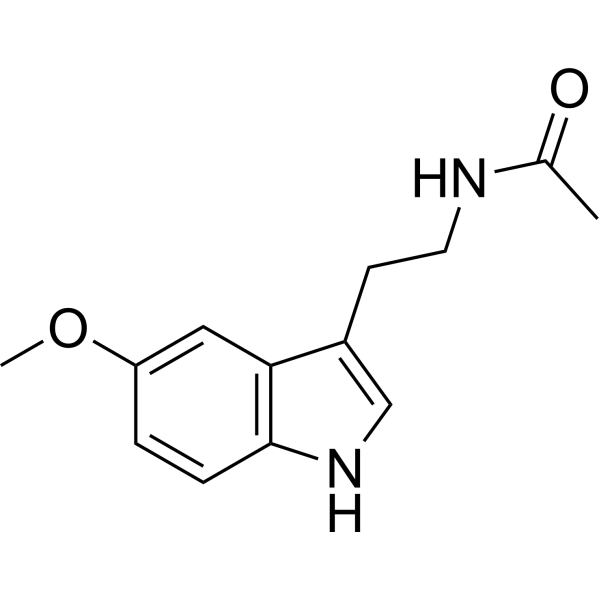
-
- HY-16561R
-
|
trans-Resveratrol (Standard); SRT501 (Standard)
|
IKK
Autophagy
Mitophagy
Sirtuin
Apoptosis
Bacterial
Fungal
Antibiotic
Keap1-Nrf2
|
Infection
Inflammation/Immunology
Cancer
|
|
Resveratrol (Standard) is the analytical standard of Resveratrol. This product is intended for research and analytical applications. Resveratrol (trans-Resveratrol; SRT501), a natural polyphenolic phytoalexin that possesses anti-oxidant, anti-inflammatory, cardioprotective, and anti-cancer properties. Resveratrol (SRT 501) has a wide spectrum of targets including mTOR, JAK, β-amyloid, Adenylyl cyclase, IKKβ, DNA polymerase. Resveratrol also is a specific SIRT1 activator . Resveratrol is a potent pregnane X receptor (PXR) inhibitor . Resveratrol is an Nrf2 activator, ameliorates aging-related progressive renal injury in mice model . Resveratrol increases production of NO in endothelial cells .
|
-

-
- HY-131997
-
|
|
GABA Receptor
|
Neurological Disease
Inflammation/Immunology
|
|
2'MeO6MF is a brain-penetrant positive allosteric modulator at α2β1γ2L and all α1-containing GABAA receptors. 2'MeO6MF also can directly activate α2β2/3 and α2β2/3γ2L GABAA receptors. 2'MeO6MF has anxiolytic and psychomotor stabilizing properties. 2'MeO6MF offers neuroprotection and improved functional recovery and dampens the stroke-induced inflammatory response .
|
-

| Cat. No. |
Product Name |
Target |
Research Area |
-
- HY-P1345A
-
|
|
Complement System
|
Neurological Disease
Endocrinology
|
|
TLQP-21 TFA, a VGF-derived peptide endowed of endocrine and extraendocrine properties, is a potent G-protein-coupled receptor complement-3a receptor1 (C3aR1) agonist (EC50: mouse TLQP-21=10.3 μM; human TLQP-21=68.8μM). TLQP-21 TFA activates C3aR1 to induce an increase of intracellular Ca 2+. TLQP-21 TFA is used for the research in regulation of nociception and other relevant physiologic functions .
|
-
- HY-P1345
-
|
|
Complement System
|
Neurological Disease
Endocrinology
|
|
TLQP-21, a VGF-derived peptide endowed of endocrine and extraendocrine properties, is a potent G-protein-coupled receptor complement-3a receptor 1 (C3aR1) agonist (EC50: mouse TLQP-21=10.3 μM; human TLQP-21=68.8 μM). TLQP-21 activates C3aR1 to induce an increase of intracellular Ca 2+. TLQP-21 is used for the research in regulation of nociception and other relevant physiologic functions .
|
| Cat. No. |
Product Name |
Category |
Target |
Chemical Structure |
-
- HY-B0649
-
-

-
- HY-N0050
-
-

-
- HY-N0499
-
-

-
- HY-B0649R
-
-

-
- HY-141581
-
-

-
- HY-16561
-
Resveratrol
Maximum Cited Publications
80 Publications Verification
trans-Resveratrol; SRT501
|
Structural Classification
Classification of Application Fields
Anti-aging
Source classification
Vitis vinifera cv. Zalema
Plants
Vitaceae
Infection
Microorganisms
Functional Molecules
Sunscreen
Research of Health Products
Phenols
Polyphenols
Cosmetic Research
Inflammation/Immunology
Disease Research Fields
Cancer
|
IKK
Autophagy
Mitophagy
Sirtuin
Apoptosis
Bacterial
Fungal
Antibiotic
Keap1-Nrf2
|
|
Resveratrol (trans-Resveratrol; SRT501), a natural polyphenolic phytoalexin that possesses anti-oxidant, anti-inflammatory, cardioprotective, and anti-cancer properties. Resveratrol (SRT 501) has a wide spectrum of targets including mTOR, JAK, β-amyloid, Adenylyl cyclase, IKKβ, DNA polymerase. Resveratrol also is a specific SIRT1 activator . Resveratrol is a potent pregnane X receptor (PXR) inhibitor . Resveratrol is an Nrf2 activator, ameliorates aging-related progressive renal injury in mice model . Resveratrol increases production of NO in endothelial cells .
|
-

-
- HY-B0075
-
-

-
- HY-16561R
-
|
trans-Resveratrol (Standard); SRT501 (Standard)
|
Infection
Functional Molecules
Classification of Application Fields
Sunscreen
Anti-aging
Source classification
Research of Health Products
Cosmetic Research
Plants
Inflammation/Immunology
Disease Research Fields
Cancer
|
IKK
Autophagy
Mitophagy
Sirtuin
Apoptosis
Bacterial
Fungal
Antibiotic
Keap1-Nrf2
|
|
Resveratrol (Standard) is the analytical standard of Resveratrol. This product is intended for research and analytical applications. Resveratrol (trans-Resveratrol; SRT501), a natural polyphenolic phytoalexin that possesses anti-oxidant, anti-inflammatory, cardioprotective, and anti-cancer properties. Resveratrol (SRT 501) has a wide spectrum of targets including mTOR, JAK, β-amyloid, Adenylyl cyclase, IKKβ, DNA polymerase. Resveratrol also is a specific SIRT1 activator . Resveratrol is a potent pregnane X receptor (PXR) inhibitor . Resveratrol is an Nrf2 activator, ameliorates aging-related progressive renal injury in mice model . Resveratrol increases production of NO in endothelial cells .
|
-

| Cat. No. |
Product Name |
Chemical Structure |
-
- HY-B0075S
-
|
|
|
Melatonin-d4 is deuterium labeled Melatonin. Melatonin is a hormone made by the pineal gland that can activates melatonin receptor. Antioxidative and anti-inflammatory properties[1][2][3]. Melatonin is a selective ATF-6 inhibitor and induces human hepatoma cell apoptosis through COX-2 downregulation[4].
|
-

-
- HY-B0075S2
-
|
|
|
Melatonin-d7 is the deuterium labeled Melatonin. Melatonin is a hormone made by the pineal gland that can activates melatonin receptor. Melatonin plays a role in sleep and possesses important antioxidative and anti-inflammatory properties[1][2][3]. Melatonin is a novel selective ATF-6 inhibitor and induces human hepatoma cell apoptosis through COX-2 downregulation[4]. Melatonin attenuates palmitic acid-induced (HY-N0830) mouse granulosa cells apoptosis via endoplasmic reticulum stress[5].
|
-

-
- HY-B0075S1
-
|
|
|
Melatonin-d3 is the deuterium labeled Melatonin. Melatonin is a hormone made by the pineal gland that can activates melatonin receptor. Melatonin plays a role in sleep and possesses important antioxidative and anti-inflammatory properties[1][2][3]. Melatonin is a novel selective ATF-6 inhibitor and induces human hepatoma cell apoptosis through COX-2 downregulation[4]. Melatonin attenuates palmitic acid-induced (HY-N0830) mouse granulosa cells apoptosis via endoplasmic reticulum stress[5].
|
-

-
- HY-B0649S
-
|
|
|
Propofol-d17 is the deuterium labeled Propofol. Propofol potently and directly activates GABAA receptor and inhibits glutamate receptor mediated excitatory synaptic transmission. Propofol has antinociceptive properties[1].
|
-

-
- HY-16561S1
-
|
|
|
Resveratrol- 13C6 is the 13C-labeled Resveratrol. Resveratrol (trans-Resveratrol; SRT501), a natural polyphenolic phytoalexin that possesses anti-oxidant, anti-inflammatory, cardioprotective, and anti-cancer properties. Resveratrol (SRT 501) has a wide spectrum of targets including mTOR, JAK, β-amyloid, Adenylyl cyclase, IKKβ, DNA polymerase. Resveratrol also is a specific SIRT1 activator[1][2][3][4]. Resveratrol is a potent pregnane X receptor (PXR) inhibitor[5]. Resveratrol is an Nrf2 activator, ameliorates aging-related progressive renal injury in mice model[6]. Resveratrol increases production of NO in endothelial cells[7].
|
-

-
- HY-16561S
-
|
|
|
Resveratrol-d4 is the deuterium labeled Resveratrol. Resveratrol (trans-Resveratrol; SRT501), a natural polyphenolic phytoalexin that possesses anti-oxidant, anti-inflammatory, cardioprotective, and anti-cancer properties. Resveratrol (SRT 501) has a wide spectrum of targets including mTOR, JAK, β-amyloid, Adenylyl cyclase, IKKβ, DNA polymerase. Resveratrol also is a specific SIRT1 activator[1][2][3][4]. Resveratrol is a potent pregnane X receptor (PXR) inhibitor[5]. Resveratrol is an Nrf2 activator, ameliorates aging-related progressive renal injury in mice model[6]. Resveratrol increases production of NO in endothelial cells[7].
|
-

Your information is safe with us. * Required Fields.
Inquiry Information
- Product Name:
- Cat. No.:
- Quantity:
- MCE Japan Authorized Agent:



































